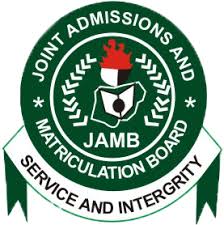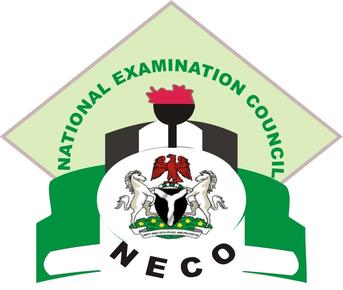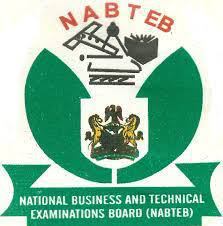2019/2020 JAMB CBT Physics Syllabus Questions
2019/2020 JAMB CBT Physics Syllabus Questions, the aim of the Unified Tertiary Matr2019/2020 JAMB CBT Physics Syllabus Questions Examination (UTME) syllabus in Physics is to prepare the candidates for the Board’s examination. It is designed to test their achievement of the course objectives, which are to: (1) sustain their interest in physics; (2) develop attitude relevant to physics that encourage accuracy, precision and objectivity; (3) interpret physical phenomena, laws, definitions, concepts and other theories; (4) demonstrate the ability to solve correctly physics problems using relevant theories and concepts. 1. MEASUREMENTS AND UNITS (a) Length area and volume: Metre rule, Venier calipers Micrometer Screw-guage (b) Mass (i) unit of mass (ii) use of simple beam balance (c) Time (i) unit of time (ii) time-measuring devices (d) Fundamental physical quantities (e) Derived physical quantities and their units (i) Combinations of fundamental quantities and determination of their units (f) Dimensions (i) definition of dimensions (ii) simple examples Candidates should be able to: i. identify the units of length area and volume; ii. use different measuring instruments; iii. determine the lengths, surface areas and volume of regular and irregular bodies; iv. identify the unit of mass; v. use simple beam balance, e.g Buchart’s balance and chemical balance; vi. identify the unit of time; vii. use different time-measuring devices; viii. relate the fundamental physical quantities to their units; ix. deduce the units of derived physical quantities; x. Determine the dimensions of physical quantities; xi. use the dimensions to determine the units (g) Limitations of experimental measurements (i) accuracy of measuring instruments (ii) simple estimation of errors. (iii) significant figures. (iv) standard form. 2. Scalars and Vectors (i) definition of scalar and vector quantities (ii) examples of scalar and vector quantities (iii) relative velocity (iv) resolution of vectors into two perpendicular directions including graphical methods of solution. 3. Motion (a) Types of motion: translational, oscillatory, rotational, spin and random (b) linear motion (i) speed, velocity and acceleration (ii) equations of uniformly accelerated motion (iii) motion under gravity (iv) distance-time graph and velocity time graph (v) instantaneous velocity and acceleration. (c) Projectiles: (i) calculation of range, maximum height and time of fight (ii) applications of projectile motion (d) Newton’s laws of motion: (i) inertia, mass and force (ii) relationship between mass and acceleration (iii) impulse and momentum (iv) conservation of linear momentum (Coefficient of restitution not of physical quantities; xii. test the homogeneity of an equation; xiii. determine the accuracy of measuring instruments; xiv. estimate simple errors; xv. express measurements in standard form. Candidates should be able to: i. distinguish between scalar and vector quantities; ii. give examples of scalar and vector quantities; iii. determine the resultant of two or more vectors; iv. determine relative velocity; v. resolve vectors into two perpendicular components; vi. use graphical methods to solve vector problems; Candidates should be able to : i. identify different types of motion ; ii. differentiate between speed, velocity and acceleration; iii. deduce equations of uniformly accelerated motion; iv. solve problems of motion under gravity; v. interpret distance-time graph and velocity-time graph; vi. compute instantaneous velocity and acceleration vii. establish expressions for the range, maximum height and time of flight of projectiles; viii. solve problems involving projectile motion; ix. interpret Newton’s laws of motion; x. compare inertia, mass and force; xi. deduce the relationship between mass and acceleration; xii. solve numerical problems involving impulse and momentum; necessary) (e) Motion in a circle: (i) angular velocity and angular acceleration (ii) centripetal and centrifugal forces. (iii) applications (f) Simple Harmonic Motion (S.H.M): (i) definition and explanation of simple harmonic motion (ii) examples of systems that execute S.H.M (iii) period frequency and amplitude of S.H.M (iv) velocity and acceleration of S.H.M (v) energy change in S.H.M 4 Gra vitational field (i) Newton’s law of universal gravitation (ii) gravitational potential (iii) conservative and non-conservative fields (iv) acceleration due to gravity g = GM R (iv) variation of g on the earth’s surface (v) distinction between mass and weight (vi) escape velocity (vii) parking orbit and weightlessness 5. Equilibrium of Forces (a) eq uilibrium of a particles : (i) equilibrium of coplanar forces (ii) triangles and polygon of forces (iii) Lami’s theorem (b) principles of moments (i) moment of a force (ii) simple treatment and moment of a couple (torgue) (iii) applications (c) conditions for equilibrium of rigid bodies under the action of parallel and non-parallel forces (i) resolution and composition of forces in two perpendicular directions, xiii. interpret the law of conservation of linear momentum; xiv. establish expression for angular velocity, angular acceleration and centripetal force; xv. solve numerical problems involving motion in a circle; xvi. establish the relationship between period and frequency; xvii. analyse the energy changes occurring during S.H.M Candidates should be able to: i. identify the expression for gravitational force between two bodies; ii. apply Newton’s law of universal gravitation; iii. give examples of conservative and non- conservation fields; iv. deduce the expression for gravitational field potentials; v. identify the causes of variation of g on the earth’s surface; vi. differentiate between mass and weight; vii. determine escape velocity Candidates should be able to: i. apply the conditions for the equilibrium of coplanar force to solve problems; ii. use triangle and polygon laws of forces to solve equilibrium problems; iii. use Lami’s theorem to solve problems; iv. analyse the principle of moment of a force; v. determine moment of a force and couple; vi. describe some applications of moment of a force and couple; vii. apply the conditions for the equilibrium of rigid bodies to solve problems; (ii) resultant and equilibrant (d) centre of gravity and stability (i) stable, unstable and neutral equilibra 6. Work Energy and Power (i) definition of work, energy and power (ii) forms of energy (iii) conservation of energy (iv) qualitative treatment between different forms of energy (v) interpretation of area under the force- distance curve 7. Friction (i) static and dynamic friction (ii) coefficient of limiting friction and its determination. (iii) advantages and disadvantages of friction (iv) reduction of friction (v) qualitative treatment of viscosity and terminal viscosity. (vi) stoke’s law. 8. Simple Machines (i) definition of machine (ii) types of machines (iii) mechanical advantage, velocity ratio and efficiency of machines 9. Elasticity (i) elastic limit, yield point, breaking point, Hooke’s law and Young’s modulus (ii) the spring balance as a device for measuring force (iii) work done in springs and elastic strings 10. Pressure (a) Atmospheric Pressure (i) definition of atmospheric pressure (ii) units of pressure (S.I) units (iii) measurement of pressure (iv) simple mercury barometer, aneroid barometer and manometer. (v) variation of pressure with height (vi) the use of barometer as an altimeter. (b) Pressure in liquids (i ) the relationship between pressure, depth and density (P = rgh) viii. resolve forces into two perpendicular directions; ix. determine the resultant and equilibrant of forces; x. differentiate between stable, unstable and neutral equilibrate. Candidates should be able to: i. differentiate between work, energy and power; ii. compare different forms of energy, giving examples; iii. apply the principle of conservation of energy; iv. examine the transformation between different forms of energy; v. interpret the area under the force–distance curve. Candidates should be able to: i. differentiate between static and dynamic friction ii. determine the coefficient of limiting friction; iii. compare the advantages and disadvantage of friction; iv. suggest ways by which friction can be reduced; v. analyse factors that affect viscosity and terminal velocity; vi. apply stoke’s law. Candidates should be able to: i. identify different types of machines; ii. solve problems involving simple machines. Candidates should be able to: i. interpret force-extension curves; ii. interpret Hooke’s law and Young’s modulus of a material; iii use spring balance to measure force; iv. determine the work done in spring and elastic strings Candidates should be able to: i. recognize the S.I units of pressure; ii. identify pressure measuring instruments; iii. relate the variation of pressure to height; iv. use a barometer as an altimeter. v. determine the relationship between pressure, depth and density; (ii) transmission of pressure in liquids (Pascal’s Principle) (iii) application 11. Liquids At Rest (i) determination of density of solid and liquids (ii) definition of relative density (iii) upthrust on a body immersed in a liquid (iv) Archimede’s principle and law of floatation and applications, e.g. ships and hydrometers. 12. Temperature and Its Measurement (i) concept of temperature (ii) thermometric properties (iii) calibration of thermometers ( iv) temperature scales–Celsius and Kelvin. (v) types of thermometers (vi) conversion from one scale of temperature to another 13. Thermal Expansion (a) Sol ids ( i) definition and determination of linear, volume and area expansivities (ii) effects and applications, e.g. expansion in building strips and railway lines (iv) relationship between different expansivities (b) Liq uids (i) volume expansivity (ii) real and apparent expansivities (iii) determination of volume expansivity (iv) anomalous expansion of water 14. Gas Laws (i) Boyle’s law (PV = constant) (ii) Charle’s law ( V = constant) P (iii) Pressure law ( P = constant ) T (iv) absolute zero of temperature (v) general gas quation ( PV = constant ) T (vi) ideal gas equation (Pv = nRT) vi apply the principle of transmission of pressure in liquids to solve problems; vii. determine the application of pressure in liquid; Candidates should be able to: i. distinguish between density and relative density of substances; ii. determine the upthrust on a body immersed in a liquid; iii. apply Archimedes’principle and law of floatation to solve problems. Candidates should be able to: i. identify thermometric properties of materials that are used for different thermometers; ii. calibrate thermometers; iii. differentiate between temperature scales e.g Clesius and Kelvin. iv. compare the types of thermometers; vi. convert from one scale of temperature to another. Candidates should be able to: i. determine linear and volume expansivities; ii. assess the effects and applications of thermal expansivities; iii. determine the relationship between different expansivities; iv. determine volume, apparent, and real expansivities of liquids; v. analyse the anomalous expansion of water. Candidates should be able to: i. interpret the gas laws; ii. use expression of these laws to solve numerical problems. 15. Quantity of Heat (i) heat as a form of energy (ii) definition of heat capacity and specific heat capacity of solids and liquids (iii) determination of heat capacity and specific heat capacity of substances by simple methods e.g method of mixtures and electrical method 16. Change of State (i) latent heat (ii) specific latent heats of fusion and vaporization; (iii) melting, evaporation and boiling (iv) the influence of pressure and of dissolved substances on boiling and melting points. (v) application in appliances 17. Vapours (i) unsaturated and saturated vapours (ii) relationship between saturated vapour pressure (S.V.P) and boiling (iii) determination of S.V.P by barometer tube method (iv) formation of dew, mist, fog, and rain (v) study of dew point, humidity and relative humidity (vi) hygrometry; estimation of the humidity of the atmosphere using wet and dry bulb hygrometers. 18. Structure of Matter and Kinetic Theory (a) Mo lecular nature of matter ( i) atoms and molecules (ii) molecular theory: explanation of Brownian motion, diffusion, surface tension, capillarity, adhesion, cohesion and angles of contact (iii) examples and applications. (b) Kinetic Theory (i) assumptions of the kinetic theory (ii) using the theory to explain the pressure exerted by gas, Boyle’s law, Charles’law, melting, boiling, vapourization, change in temperature evaporation, etc. 19. Heat Transfer (i) conduction, convention and radiation as modes of heat transfer (ii) temperature gradient, thermal conductivity and heat flux (iii) effect of the nature of the surface on the Candidates should be able to: i. differentiate between heat capacity and specific heat capacity; ii. determine heat capacity and specific heat capacity using simple methods; iii. examine some numerical problems. Candidates should be able to: i. differentiate between latent heat and specific latent heat of fusion and vaporization; ii. differentiate between melting, evaporation and boiling; iii. examine the effects of pressure and of dissolved substance on boiling and melting points. Candidates should be able to: i. distinguish between saturated and unsaturated vapours; ii. relate saturated vapour pressure to boiling point; iii. determine S.V.P by barometer tube method; iv. differentiate between dew point, humidity and relative humidity; vi. estimate the humidity of the atmosphere using wet and dry bulb hydrometers. Candidates should be able to: i. differentiate between atoms and molecules; ii. use molecular theory to explain Brownian motion , diffusion, surface, tension, capillarity, adhesion, cohesion and angle of contact; iii. examine the assumptions of kinetic theory; iv. interpret kinetic theory, the pressure exerted by gases Boyle’s law, Charle’s law melting, boiling vaporization, change in temperature, evaporation, etc. Candidates should be able to: i. differentiate between conduction, convention and radiation as modes of heat transfer; ii. determine temperature gradient, thermal energy radiated and absorbed by it. (iv) the conductivities of common materials. (v) the thermos flask (vii) land and sea breeze 20. Waves (a) Production and Propagation (i) wave motion, (ii) vibrating systems as source of waves (iii) waves as mode of energy transfer (iv) distinction between particle motion and wave motion (v) relationship between frequency, wavelength and wave velocity (V=f) (vi) phase difference (vii) progressive wave equation e.g y = A sin 2(vt + x) (b) Classification (i) types of waves; mechanical and electromagnetic waves (ii) longitudinal and transverse waves (iii) stationary and progressive waves (iv) examples of waves from springs, ropes, stretched strings and the ripple tank. (c) Characteristics/Properties (i) reflection, refraction, diffraction and plane Polarization (ii) superposition of waves e.g interference 21. Propagation of Sound Waves (i) the necessity for a material medium (ii) speed of sound in solids, liquids and air; (iii) reflection of sound; echoes, reverberation and their applications (iv) disadvantages of echoes and reverberations 22. Characteristics of Sound Waves (i) noise and musical notes (ii) quality, pitch, intensity and loudness and their application to musical instruments; (iii) simple treatment of overtones produced by conductivity and heat flux; iii. assess the effect of the nature of the surface on the energy radiated and absorbed by it; iv. compare the conductivities of common materials; v. relate the component part of the working of the thermos flask; vi. differentiate between land and sea breeze. Candidates should be able to: i. interpret wave motion; ii. identify vibrating systems as sources of waves; iii use waves as a mode of energy transfer; iv distinguish between particle motion and wave motion; v. relate frequency and wave length to wave velocity; vi. determine phase difference; vii. use the progressive wave equation to compute basic wave parameters; viii. differentiate between mechanical and electronmagnetic waves; ix. differentiate between longitudinal and transverse waves x. distinguish between stationary and progressive waves; xi. indicate the example of waves generated from springs, ropes, stretched strings and the ripple tank; xii. differentiate between reflection, refraction, diffraction and plane polarization of waves; xiii. analyse the principle of superposition of waves. Candidates should be able to: i. determine the need for a material medium in the propagation of sound waves; ii. compare the speed of sound in solids, liquids and air; iii. relate the effects of temperature and pressure to the speed of sound in air; iv. solve problem on echoes, reverberation; v. compare the disadvantages and echoes. Candidates should be able to: i. differentiate between noise and musical notes; ii. analyse quality, pitch, intensity and loudness of sound notes; iii. evaluate the application of (ii) above in the vibrating strings and their columns Fo= l T 2L m (iv) acoustic examples of resonance (v) frequency of a note emitted by air columns in closed and open pipes in relation to their lengths. 23. Light Energy (a) So urce of Light: (i) natural and artificial source of light (ii) luminous and non-luminous objects (b) Prop agation of light (i) speed, frequency and wavelength of light (ii) formation of shadows and eclipse (iii) the pin-hole camera. 24. Reflection of Light at Plane and Curved rfaces (i) laws of reflection. (ii) application of reflection of light (iii) formation of images by plane, concave and convex mirrors and ray diagrams (iv) use of the mirror formula l = l + l f u v (v) linear magnification 25. Refraction of Light Through (a) Pla ne and Curved Surface (i) explanation of refraction in terms of velocity of light in the media. (ii) laws of refraction (iii) definition of refractive index of a medium (iv) determination of refractive index of glass and liquid using Snell’s law (v) real and apparent depth and lateral displacement (vi) critical angle and total internal reflection (b) Glass Prism (i) use of the minimum deviation formula A + D u = sin 2 sin A 2 construction of musical instruments; iv. identify overtones by vibrating stings and air columns; v. itemize acoustical examples of resonance; vi. determine the frequencies of notes emitted by air columns in open and closed pipes in relation to their lengths. Candidates should be able to: i. compare the natural and artificial sources of light; ii. differentiate between luminous and non luminous objects; iii. relate the speed, frequency and wavelength of light; iv. interpret the formation of shadows and eclipses; v. solve problems using the principle of operation of a pin-hole camera. Candidates should be able to: i. interpret the laws of reflection; ii. illustrate the formation of images by plane, concave and convex mirrors; iii. apply the mirror formula to solve optical probleCategories: Jamb Syllabus | Past Questions
0 Responses




